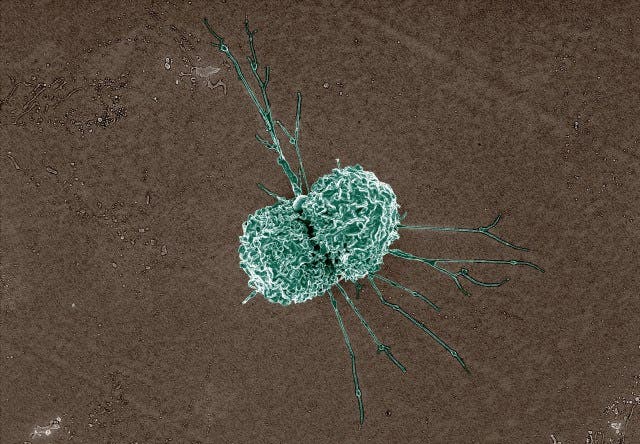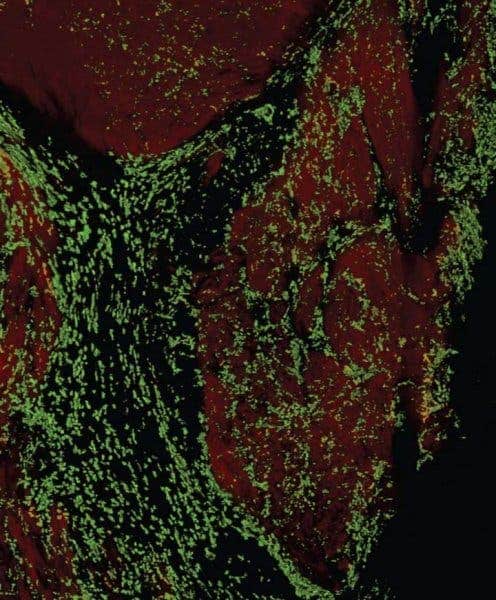Macrophages seem to not only help keep the body safe and clean but also make sure it stays very much alive by helping the mammalian heart beat in rhythm, new research reveals.

Image credits NIAID / Flickr.
They’re the champion eaters of our bodies, gulping up pathogens and waste wherever they find them — they’re the macrophages. These white cells play a central part in our immune systems, for which we’re all thankful. But they may play a much more immediately vital role for us than we’ve suspected. Researchers from the Massachusetts General Hospital have discovered that these cells play a central part in regulating cardiac activity by conducting electrical signals through the heart.
“This work opens up a completely new view on electrophysiology; now, we have a new cell type on the map that is involved in conduction,” says senior author Matthias Nahrendorf, a systems biologist at Massachusetts General Hospital, Harvard Medical School.
“Macrophages are famous for sensing their environment and changing their phenotype very drastically, so you can think about a situation where there is inflammation in the heart that may alter conduction, and we now need to look at whether these cells are causally involved in conduction abnormalities.”
Researchers have known for some time now that macrophages can be found in and around hearts battling an infection — cause that’s what they do. But Nahrendorf team found that they still hang around in healthy hearts, in much greater numbers than would be required for simple maintenance or defense. So he and his team set out to understand why.
After performing MRI and electrocardiogram studies on model depleted of macrophages, the team found that the heart was arrhythmic and beat too slowly. By analyzing the heart tissue of a healthy mouse, they found that there’s a high density of macrophage cells at atrioventricular node, which carries electricity from the atria to the heart’s ventricles.
Working with David Milan and Patrick Ellinor, both electrophysiologists at Massachusetts General Hospital, the researchers found that the macrophages extend their membranes between cardiac cells and create pores, known as gap junctions, for electricity to flow through. This helps prepare the heart’s conducting cells (the ‘wiring’) for the next burst of electricity — allowing them to maintain a fast contraction rhythm.

Image credits Maarten Hulsmans / Matthias Nahrendorf.
“When we got the first patch clamp data that showed the macrophages in contact with cardiomyoctes were rhythmically depolarizing, that was the moment I realized they weren’t insulating, but actually helping to conduct,” Nahrendorf says.
“This work was very exciting because it was an example of how team science can help to connect fields that are traditionally separated — in this case, immunology and electrophysiology.”
The researchers say that the next step is to see whether macrophages have a hand to play in common conduction abnormalities in the heart. There are potential ties between macrophages and anti-inflammatory drugs, which are widely reported to help with heart disease. If macrophages do play a role in disease, the researchers say it can open up a new line of therapeutics, as these immune cells naturally consume foreign molecules in their presence and are easy to target as a result.
The full paper “Macrophages Facilitate Electrical Conduction in the Heart” has been published in the journal Cell.


